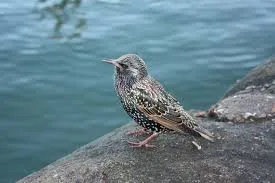
Шіл . 29, 2024 10:19 Back to list
TRICHOMONIASIS
TRICHOMONIASIS
1. What is Trichomoniasis?
Trichomoniasis is a disease caused by a microscopic motile (moving) protozoa called trichomonas.
2. Where are trichomonads usually found?
Trichomonads are usually found in the crop, mouth, pharynx or trachea.
Other sites include the lungs and the liver.
3. What is the route of transmission?
The protozoa are transmitted by direct mouth to mouth contact between two birds or in contaminated water and food.
There is no aerosol transmission. There is no resistant cyst form so trichomonas does not survive in the environment for long periods.
4. What are the clinical signs of Trichomoniasis?
-
Vomiting and regurgitation
-
Weight loss with increased appetite - birdsoften select the smallest seed to eat as it is less painful
-
White plaques and/or cheesy material in the crop and trachea
-
Being "fluffed up"
-
Green diarrhoea
-
Dyspnoea
-
Poor growth in young birds
5. Is Trichomoniasis fatal?
In untreated birds it is often fatal.
If the bird is severely emaciated it may die despite treatment.
6. In which bird species is Trichomoniasis seen?
Trichomoniasis is most commonly seen in budgerigars, pigeons (where it is often called "canker") and in raptors (where it is often called "frounce"). They can be seen occasionally in any birds and will, for example, be seen in cockatiels caged with infected budgerigars.
Anti-trichomonad in bird
7. Do all birds with trichomonads have clinical signs?
No. Some birds can be carriers and show no signs even after several years of infection. The amount of trichomonads seen on a wet smear often correlates with the clinical signs.
8. How is Trichomoniasis identified in the live bird?
Fresh warm crop washes will display these highly motile protozoa at 100x and 400x magnification.
Trichomonads have four flagella and an undulating membrane.
They can also be identified on a Diff-Quick stain. However, during the process of staining, usually all the trichomonads are lost leading to a false negative result.
9. Are trichomonads easy to identify?
Yes, though they may be missed for several reasons:
-
Warm saline was not used for the crop wash;
-
If only small numbers are present they may be missed on the crop wash;
-
Diff-Quick staining may lead to the loss of all the trichomonads.
10. Can my local laboratory identify Trichomoniasis?
No. Usually the protozoa will not survive the transport to the laboratory. Very occasionally they will be seen on histopathology.
11. What is the treatment for Trichomoniasis?
Birds can be treated with Ronidazole (Ronnivet-S) in the water for seven days. It has a wide safety margin.
Pigeons can be treated with a single dose of carnidazole (Spartrix). Metronidazole (Flagyl), has been also used in the past, orally for 2-10 days.
12. What additional treatment procedures may be needed?
The cage should be cleaned thoroughly daily and then disinfected. Quarantine all new birds until examined for Trichomoniasis.
High energy soft-liquid food supplements for emaciated birds.
Fluids intravenously or subcutaneously may be needed in cases of severe vomiting.
A heat source eg. a 40 watt light globe.
Treatment of the often present secondary infections.
13. Will all birds recover with treatment?
Most birds will recover.
However, birds that are severely debilitated and/or have extensive damage to the respiratory or digestive tract may not recover. Drug resistance is also now appearing in Europe to the available drugs.
-
Top Hemoglobinuria Manufacturer & Supplier Reliable Hemoglobinuria Factory Solutions
NewsJun.24,2025
-
Premium Honeysuckle Products - Leading Honeysuckle Manufacturer & Supplier Factory
NewsJun.10,2025
-
Pulmonary Edema Solutions from Leading Manufacturer & Supplier Reliable Factory Price
NewsJun.10,2025
-
Red Eyes - Leading Red Eyes Manufacturer & Supplier, Premium Quality Factory Price
NewsJun.10,2025
-
Broiler Ascites Syndrome Solutions Top Manufacturers
NewsJun.10,2025
-
Premium Amoxicillin Suppliers Reliable Biomox Mexican Factories
NewsJun.10,2025





